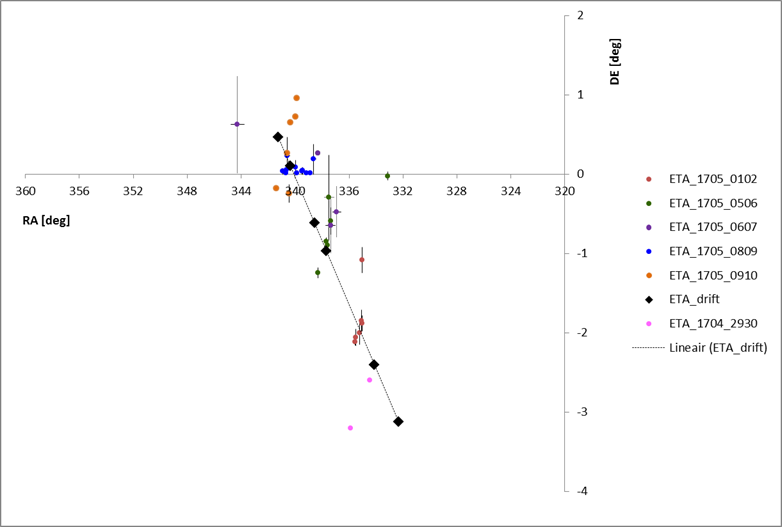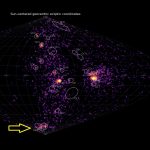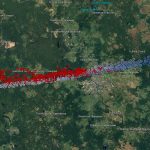Despite unfavorable weather conditions CAMS BeNeLux could collect 35 precise orbits of the Eta Aquariids stream in the last days of April and the first decade of May 2017. Radiant positions, radiant drift and orbital elements are in good agreement with the positions in previous work (Jenniskens et al., 2016).
1 Conditions in 2017
It is well known that observing the Eta Aquariids at the latitudes of the BeNeLux CAMS network (50°–53°) has something of playing ‘hide and seek’. The observing window for the BeNeLux sites remains restricted to the morning twilight of the first decade of May. This year the waxing moon played its part, be it low at the horizon.
The weather remains always the most uncertain element. The chances for success are the best with a clear transparent sky. These kind of clear nights were rather rare this year. Only the nights 8–9 and 9–10 May were clear for almost the entire BeNeLux. The night 5–6 May had reasonable observing circumstances.
2 The observations
The first ETA has been captured on 30 April at 02h21m49s UT by Bart Dessoy (camera 397) and Luc Gobin (camera 391). Half hour later, at 02h50m51s UT, Robert Haas (camera 365) and Steve Rau (camera 387) got a second ETA.
After a cloudy night 30 April on 1 May, in the early morning of 2 May some clear sky over the South and South-West of the BeNeLux enabled four Belgian (Hervé Lamy, Bart dessoy, Jean-Marie Biets and Paul Roggemans) and two Dutch CAMS stations (Robert Haas and Klaas Jobse) to capture in total 5 ETAs. Then again sky remained almost completely cloudy for 3 nights.
Only in the morning of 6 May, right at the maximum of this shower, 6 ETAs could be recorded, again from the South and Southwest of the BeNeLux. This time Erwin van Ballegoij, Robert Haas, Paul Roggemans, Hervé Lamy and Jean-Marie Biets delivered the ETAs.
The next morning observers in the northern part of the BeNeLux got four ETAs (Martin Breukers, Robert Haas and Carl Johannink).
7–8 May remained cloudy but in both following nights the entire BeNeLux network enjoyed clear sky, with another respectively twelve and seven ETAs captured, by the above mentioned CAMS fellows together with Piet Neels, Hans Betlem, Franky Dubois and Hans Schremmer. After another four ETAs during the night 10–11 May, a last ETA for 2017 has been captured on 13–14 May by Martin Breukers and Paul Roggemans.

Figure 1 – Radiant positions for the ETAs and radiant drift (Jenniskens et al., 2016).
Figure 1 shows a plot of the radiant positions as obtained during the period of 1 until 10 May 2017. The radiant drift has been plotted using a radiant drift of Δα = 0.92°/day and Δδ = 0.37°/day relative to the time of maximum activity at λmax = 46.0° (Jenniskens et al., 2016). Figure 1 seems to suggest that the drift in Right Ascension is a bit smaller than 0.92°/day, however the small size of our dataset requires caution before drawing conclusions.
3 Conclusion
The results obtained by CAMS BeNeLux for the 2017 Eta Aquariids are in good agreement with the results published by Jenniskens (2016). We thank all CAMS operators for the quick reporting of data.
References
Jenniskens P., Gural P. S., Grigsby B., Dynneson L. , Koop M. and Holman D. (2011). “CAMS: Cameras for Allsky Meteor Surveillance to validate minor meteor showers”. Icarus, 216, 40–61.
Jenniskens P., Nénon Q., Albers J., Gural P. S., Haberman B., Holman D., Morales R., Grigsby B. J., Samuels D. and Johannink C. (2016). “The established meteor showers as observed by CAMS”. Icarus, 266, 331–354.






